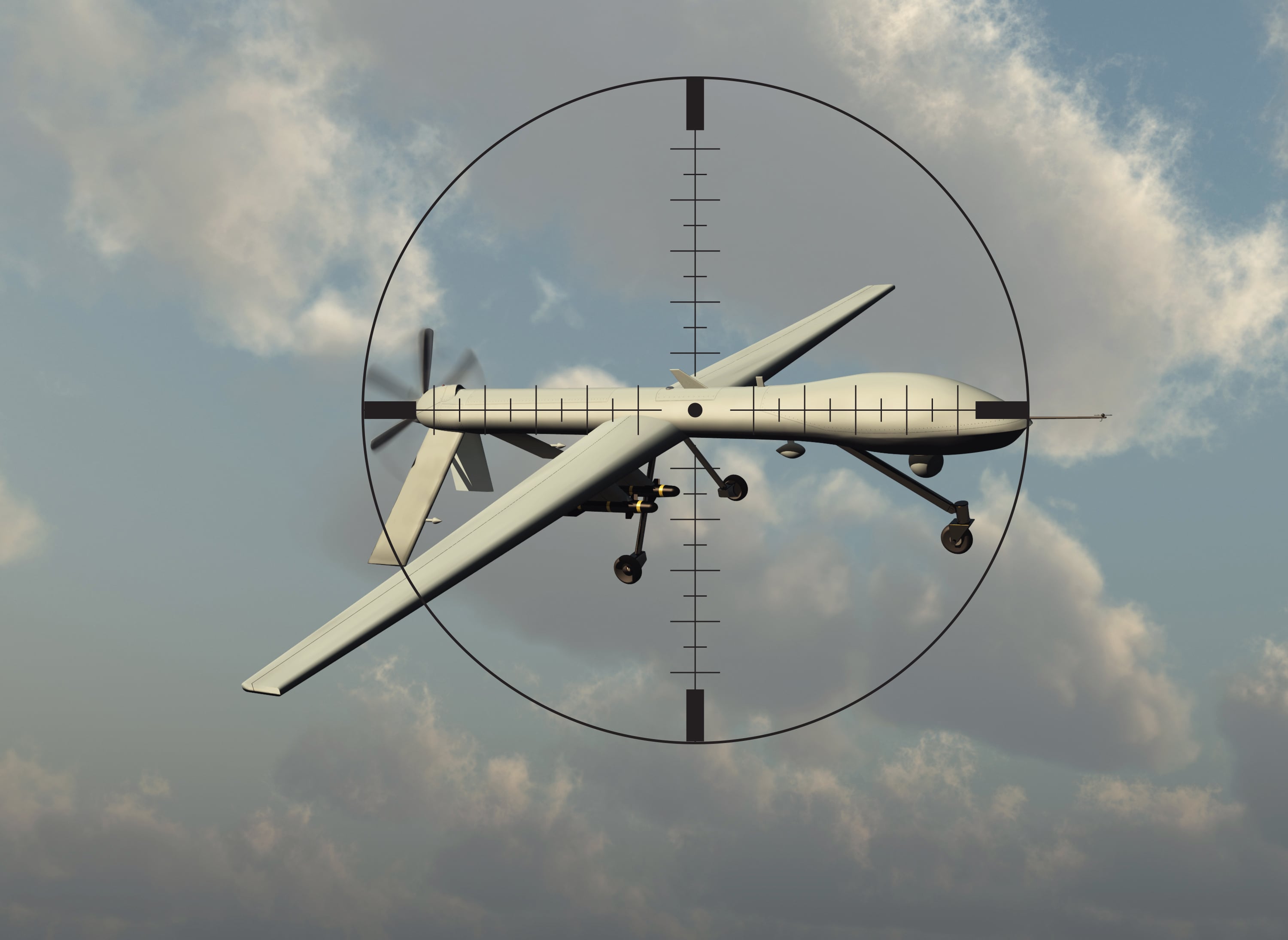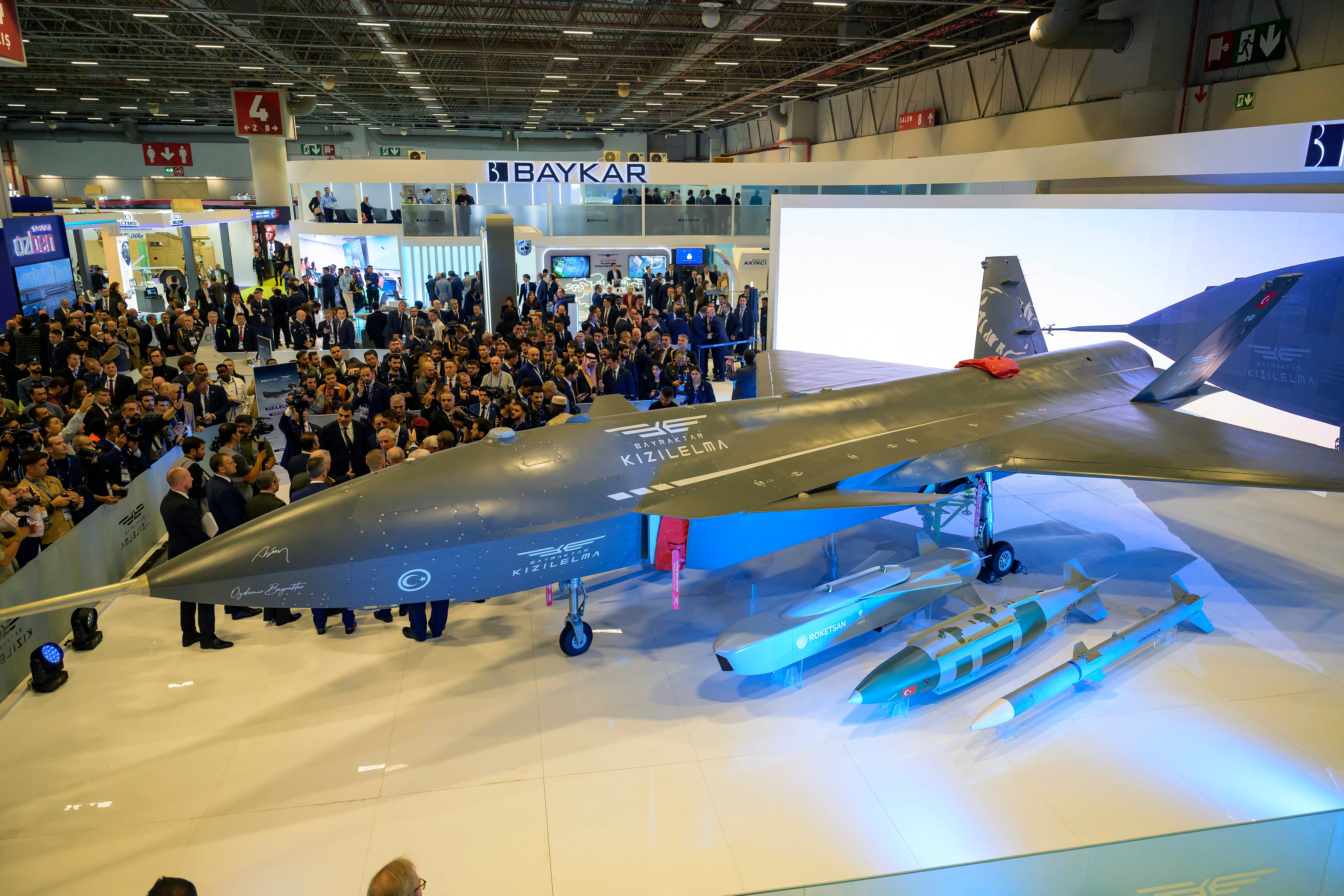Officials have claimed that counter-drone is the new counter-IED, making it top priority to thwart these low-cost devices used by insurgents to conduct reconnaissance and drop bombs.
[Counter-drone is the new counter-IED]
As leaders assert there is “no silver bullet,” the problem is indicative of the challenges associated with rapidly equipping forces against highly adaptive enemies in the age of commercial technological revolution.
[‘No silver bullet’: Pentagon struggles to defeat drones in cat-and-mouse game]
“With ready availability of these commercial drones, ISIS and other groups have taken advantage of that…and have adapted it for everything from the intended purpose of some of these drones to conduct reconnaissance because they’re camera-equipped,” said Tim Clauss, an intelligence analyst with the Joint Improvised-Threat Defeat Organization, during an event at Fort Belvoir, Virginia, on Oct. 17. “But in some instances…they’ve adapted them and dropped some small munitions,”
These advancements in commercial technology have allowed groups like ISIS to mount their own tactical air force – something previously only afforded to nation-states.
[In drones, ISIS has its own tactical air force]
“The problem with these drones that we’ve discovered is not that the bad guys are developing them so fast, it’s that industry is,” Hatcher Tynes, a contractor supporting force structure within JIDO – or the J8 directorate – told reporters.
Commercial industry has tried to make their drones “idiot proof,” he said, to keep them from easily being crashed by everyday, novice users. “That’s unintentionally made our jobs a lot harder because these drones are getting better and better at what they do [and] the bad guys get better with practice,” he added.
JIDO, as a rapid equipping force with unique acquisition and quick-reaction authorities, tries to tackle these problems for the combatant commands that issue certain urgent operational needs statements.
“We exist to help the warfighters adapt. So that means we have to be able to turn pretty quickly…our sweet spot is to be able to turn something in two years,” Lisa Swan, director for mission support at JIDO, told reporters. “We don’t own programs of record. We’re trying to respond quickly, get capability out there. If the need exists long-term, it will inform those programs of record…we’re pushing to get something out that might not be the 100 percent solution. If that need continues to exist or if that need exists for large quantities for things, that’s not us. We’re kind of filling the gap and learning from that to then transition, and the services will pick up the program of record.”
With enemies that can rapidly adapt their tactics techniques and procedures, leveraging rapidly proliferating commercial technology, rapid equipping organizations like JIDO have their hands full delivering solutions.
“We’re up against an adversary who doesn’t care about programs of record or program mangers or POM cycles. We have to be able to move quickly and maintain agility,” Lt. Gen. Michael Shields, JIDO director, told reporters.
“The adversary is going to adapt so we’re never finding the solution,” Swan said. “We adapt, they adapt, we adapt, they adapt and… sometimes we put things out there and it isn’t a long-term need because they have adapted and we must move on to the next thing.”
“Some of the things we deploy into theater might actually be prototypes,” Shields said. “They may or may not be integrated into a program of record. They may have a temporal aspect, they’re good for a period of time, but the threat adversary adapts as well.”
Shields added that JIDO was able to deliver two counter-UAS capabilities to theater in less than 60 days from a requirement being issued, given the flexibility current authorities allow.
While declining to offer many specifics regarding what types of counter-UAS systems JIDO is looking at, he said they’re looking at a number of different systems and several could be grouped under the banner of electronic warfare.
[US coalition battles ISIS with EW, counter-drone ops]
The problem isn’t just resident with non-state groups leveraging technology; advancements in software and software defined radios have presented complex problems in the electronic warfare realm. The Army’ Rapid Capabilities Office is issuing limited quantity electronic warfare systems to the European theater to help get at operational needs statements in theater, given the service is outmatched by Russian electronic warfare capability.
[Outmatched, Army begins long road to electronic warfare rollout]
Similarly, these solutions in many cases are prototypes that might inform future programs of record, but are good enough for the time being to bring parity against the threat.
Getting at threat-informed solutions
While JIDO has a presence will all the geographic combatant commands – despite the main focus being Central Command – which provide the requirements for capabilities through operational needs statements, JIDO has intelligence analysts that help inform its materiel developers.
“That is our job: Keep up with the changes of how the threat uses those technologies,” John Tingle, another intelligence analyst with JIDO, told reporters.
“From a J2 perspective of identifying a threat…J2 identifies these things on the battlefield, observes how they’ve actually employed them, what’s involved with them and then passes that information to the J8 so the J8 can take that information and then start developing technology to counter that,” Clauss said.
Shields noted that JIDO’s intelligence personnel aren’t just looking at TTPs, but also looking for patterns from all source fusion and running analytics to derive insight from that data.
“To develop technology against a threat, you have to know what the threat is,” Tynes said.
Getting ahead of the threat has been a challenge JIDO’s had for its entire existence, he added. “We try to think ahead. We get information from [intelligence personnel] they say what they’re seeing; we think, OK, where’s the technology right now?” he said. “That’s an extremely hard thing to track because of the internet. We sometimes guess; we look at the system, get a breakdown of what they’re seeing and we say, ‘is there technology that exists that can counter this somehow, be it hijacking it or shooting it down or what have you?’”
The other complicating factor is that there’s no commercial counter-drone market yet, meaning the Defense Department has to drive it. This is done, Tynes said, through communication with industry, attending conferences, establishing dialogue and issuing broad agency announcements.
Mark Pomerleau is a reporter for C4ISRNET, covering information warfare and cyberspace.








